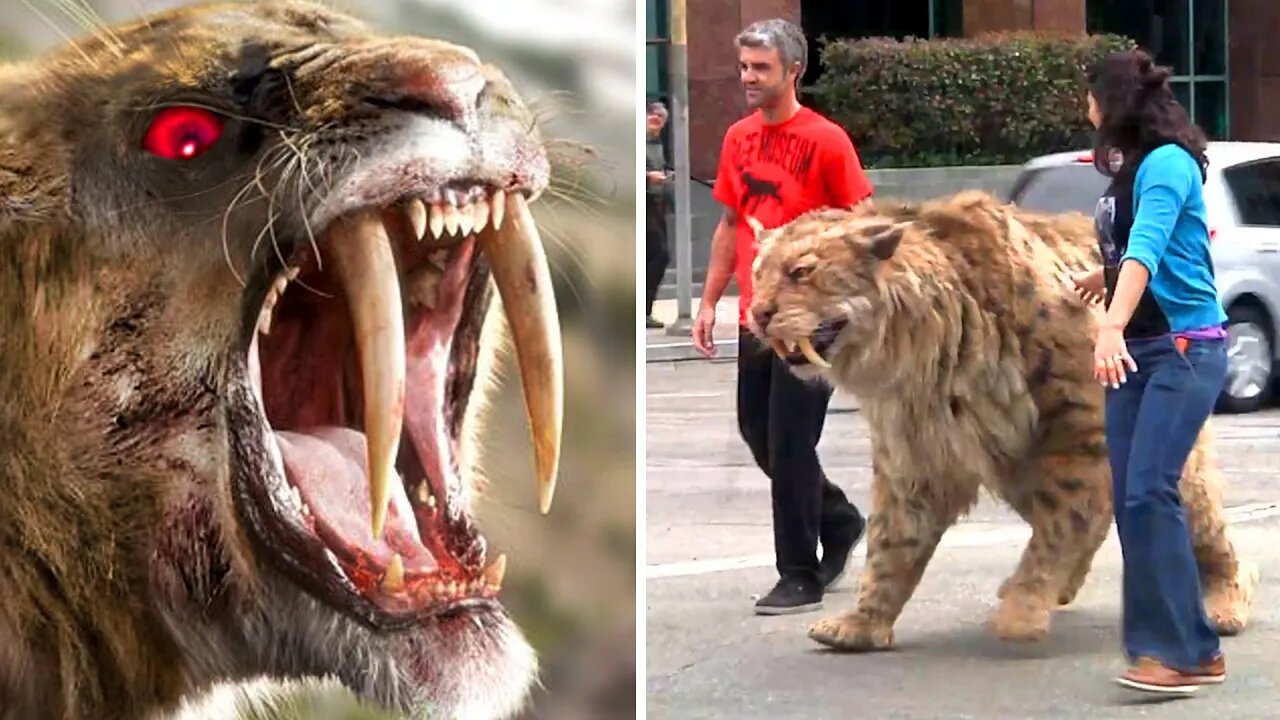Premium Only Content

20 Extinct Animals Scientists Are Ready To Bring Back #extinctanimals #viral
Due to the dramatic shift in climate and other human interventions, there are a lot of plant and animal species that are extinct than those that are alive today. This is actually a shame, especially to the scientist’s community who should have given it all to study these creatures. However due to advances in genetics and cloning, bringing this animals back from extinction seems more of a possibility than ever. Let’s look at some of the top 20 animals scientists are ready to bring back.
1. The dodo
30years after its discovery, the dodo became extinct. It’s only known habitat was Mauritius Island where it had been living peacefully, who knows for how long until in the 1590s when their death showed up. The dodo had no fear of people because it had not seen humans before so it was easy to cab this creature to death. These birds were big and heavy, a little over 3 feet tall and weighing about 39 pounds. Luckily the dodo may soon become un-extinct as scientists just need to collect few DNA samples and implant them into their closest relative, the pigeon.
3. The woolly mammoth
Even though most of the woolly mammoths died out about 10,000 years ago, a population of about 500 to 1000 of them was still living on wrangle island up to 4000 years ago. This animal was about the size of an African elephant with a shoulder height of 11 feet and weighed about 6tons.They had a thick double coated far and fluffy ears that helped it survive harsh conditions. Many discovered specimens frozen in the arctic make it possible for scientists to use their DNA and create a high breed embryo of a wooly mammoth and an elephant that has already been nicknamed mammophant.
5. The Siberian unicorn
There you go for that’s what a real unicorn looks like, and it was more like a rhino than a gracious horse. Siberian unicorn discovered in Kazakhstan showed that it had just disappeared 29,000 years ago unlike scientists had earlier thought, and that’s great for people who wish to see a unicorn someday, because it was technically a unicorn and not some magical fairy tale type. With one big horn coming out of its skull, it was 15 feet long 6 feet tall with a whopping 9,000 pounds in weight! Mh.. there you go fox.
6. The woolly rhinoceros
Alongside the woolly mammoth is the woolly rhinoceros a fluffy extinct animal that scientists want to bring back.This animal recently lived in the arctic snows about 10,000 years ago. This furry rhino is quite famous and often makes an appearances in the french chauvet-point d’ arc cave. The arctic permafrost has done a great job by preserving quite a lot of specimen and now the woolly rhinoceros has the same chances of being resurrected as a mammoth.
7. The saber-toothed tiger
Just about the size of your modern day big cat, this extinct animal being brought back by scientists could get up to 13 feet long and weighed from 200 to 600 pounds. It had a muscular neck, powerful front legs and sharp teeth protruding from the upper jaw. Just looking at those teeth, am sure you’re thinking this is extinct animals we shouldn’t bring back to life! These freelance predators disappeared just 11,000 years ago and because their original habitat was pretty cool their fossils have remained intact just like a mammal.
10. The Irish elk
Also known as the giant dear, the Irish elk is one of the animals that dint manage to survive the ice age. Despite its extinction about 12,000 years ago, researchers have discovered Irish elk fossils that are only 7000-8000 years old in Siberia. If this is one of the extinct animals scientists want to bring back, well it will be a great sight to see.
11. Pyrenean ibex
This I a subspecies of a Spanish ibex that went into extinct for the last 20 years. They were hunted for meat for over 200 years until their exhaustion in the year 2000. But, can scientists bring back extinct animals? Yes, this species was brought back from extinct in 2006, though it went back again in just few minutes due to a deformed respiratory system.
14. The quagga
This animal that went extinct in 1983 due to hunting is actually a subspecies of the plain zebra. The two species had the same DNA and shared the same genotype though their observable characteristics are different. This extinct animal scientists are bringing back are almost identical to the extinct quagga and can be released into the wild.
18.The megalania
The magalania were part of the megafaunal assemblage that inhabited southern Australia during the Pleistocene. There is a larger initiative though aimed at retrieving the long gone megalania putting it on the list of some of the extinct animals being brought back to life.
Which one of them you want to see in real life? Do you think we should bring them back? Let us know in the comments box below.
#UltimateFact #Facts #Animals #viral #news #unrealanimals
#DeExtinctionDiscovery #RevivingLostSpecies #ConservationInnovation #ExtinctSpeciesHope #SpeciesRevivalQuest #GeneticRescueMission #EcoRestoration #ResurrectingNatureNow #ConservationBreakthrough #ExtinctAnimalsRevived #LostSpeciesRecovery #ReviveBiodiversity #HopeForExtinct #WildlifeGenomics #ReversingExtinction #FutureConservationHeroes #ExtinctNotGone #RewildingEffortsContinued #ConservationProgress #BringBackTheLostOnes #BiodiversityRevivalProject #GeneticConservation #ResurrectionScience #ExtinctSpeciesRevolution #ConservationTrailblazers #SpeciesReanimation #HopeForWildlife #GeneticDiversityRevival #EcosystemRehabilitationNow #FutureOfWildlife #ConservationBreakthroughs #BringingBackExtinct #ScientificRevival #ConservationPioneers #ExtinctSpeciesReborn #WildlifeInnovation #BiodiversityRescue #ReviveTheLost #GeneticEngineeringForNature #ConservationOptimism #ExtinctSpeciesHopeful #EcoRevivalProject #RevivingNature #FutureWildlifeRestoration #ConservationMilestones #BringingBackLife #GeneticRecovery #HopeForEndangered #RevivingEcosystems #ConservationInAction
-
 39:47
39:47
Brewzle
1 day agoPennsylvania Wouldn’t Let Me Film…So I Went Bourbon Hunting in NY
26.9K8 -
 10:12
10:12
Space Ice
22 hours agoBallistic: Ecks vs Sever - Underrated Masterpiece Or Incoherent Mess?
20.6K9 -
 2:43:07
2:43:07
RG_GerkClan
5 hours agoLIVE: Lets Get to 500 FOLLOWS! - Escape From Tarkov - Gerk Clan
22.9K4 -
 LIVE
LIVE
Vigilant News Network
20 hours agoHillary Clinton EXPOSED In Another Massive Hoax | The Daily Dose
1,909 watching -
 1:00:17
1:00:17
Trumpet Daily
1 day ago $6.55 earnedRINOs Are Trump’s Biggest Enemy Now - Trumpet Daily | Nov. 22, 2024
12.4K20 -
 17:47
17:47
RealReaper
14 hours ago $0.44 earnedGladiator 2 Another Pointless Sequel
7K3 -
 45:45
45:45
PMG
12 hours ago $0.30 earned"Hannah Faulkner and Stephanie Nash | No Farms No Food"
5.78K -
 27:11
27:11
Degenerate Plays
1 day ago $0.23 earnedReturn Of The Online Girlfriends - Stellar Blade : Part 30
4.82K -
 7:16
7:16
SeasonofMist
2 days agoSOLSTAFIR - Fjara (Official Music Video)
3.87K2 -
 3:54
3:54
Good Kid Productions
9 days agoTrump just broke legacy media. We're building something better.
2.79K